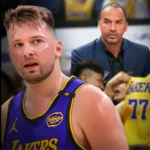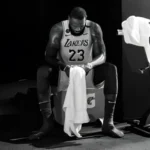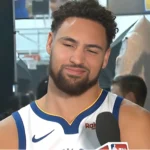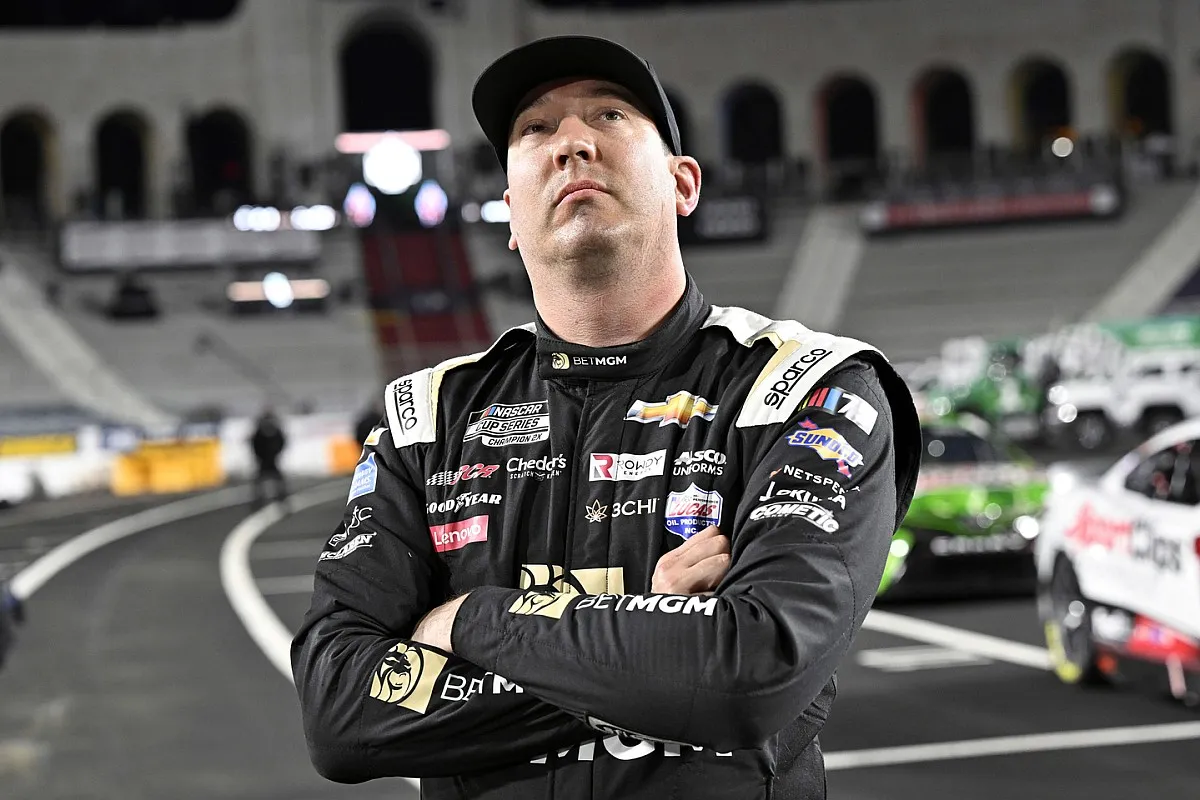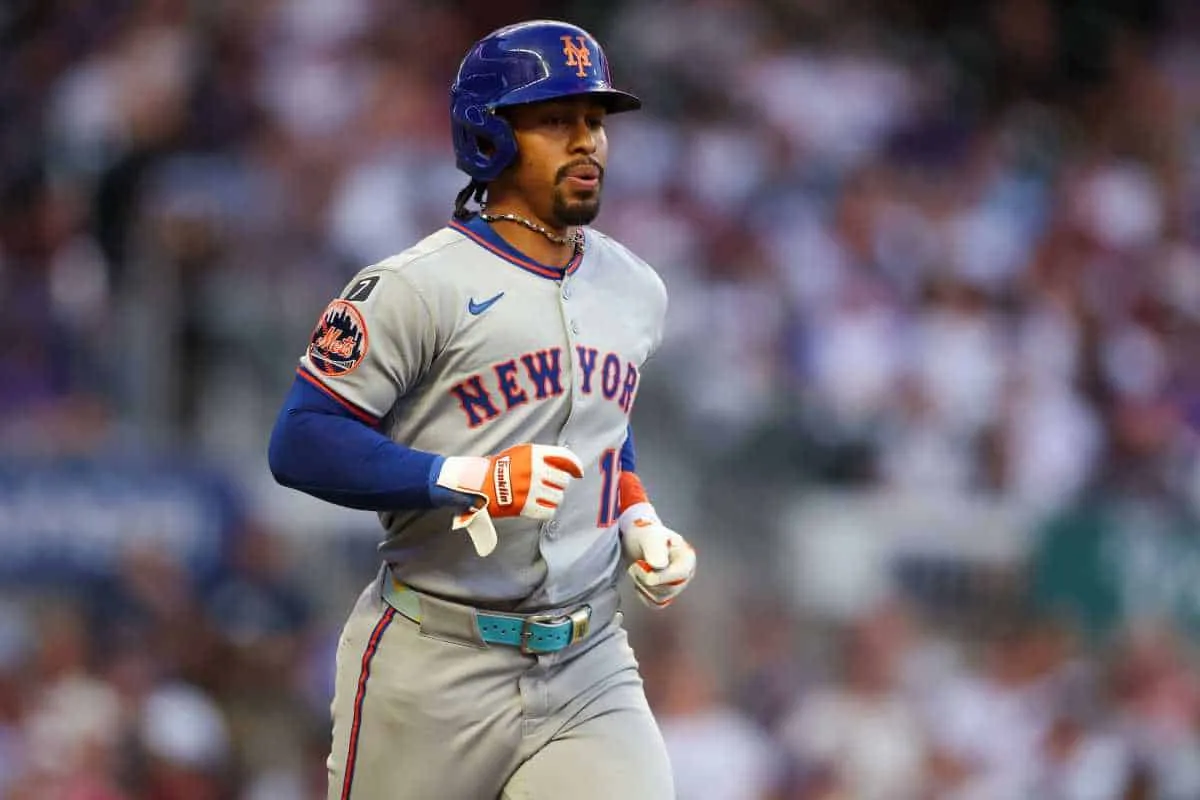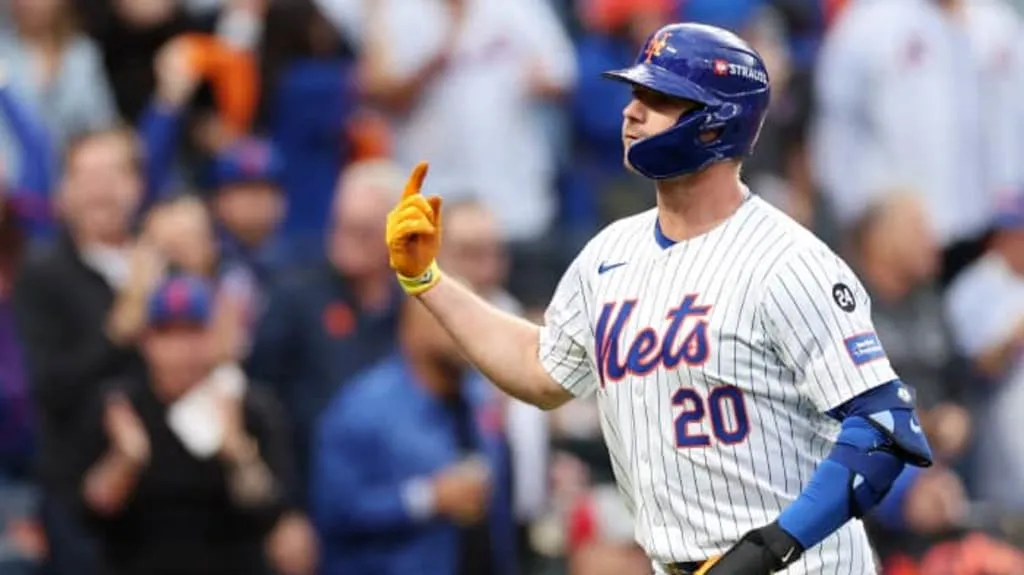
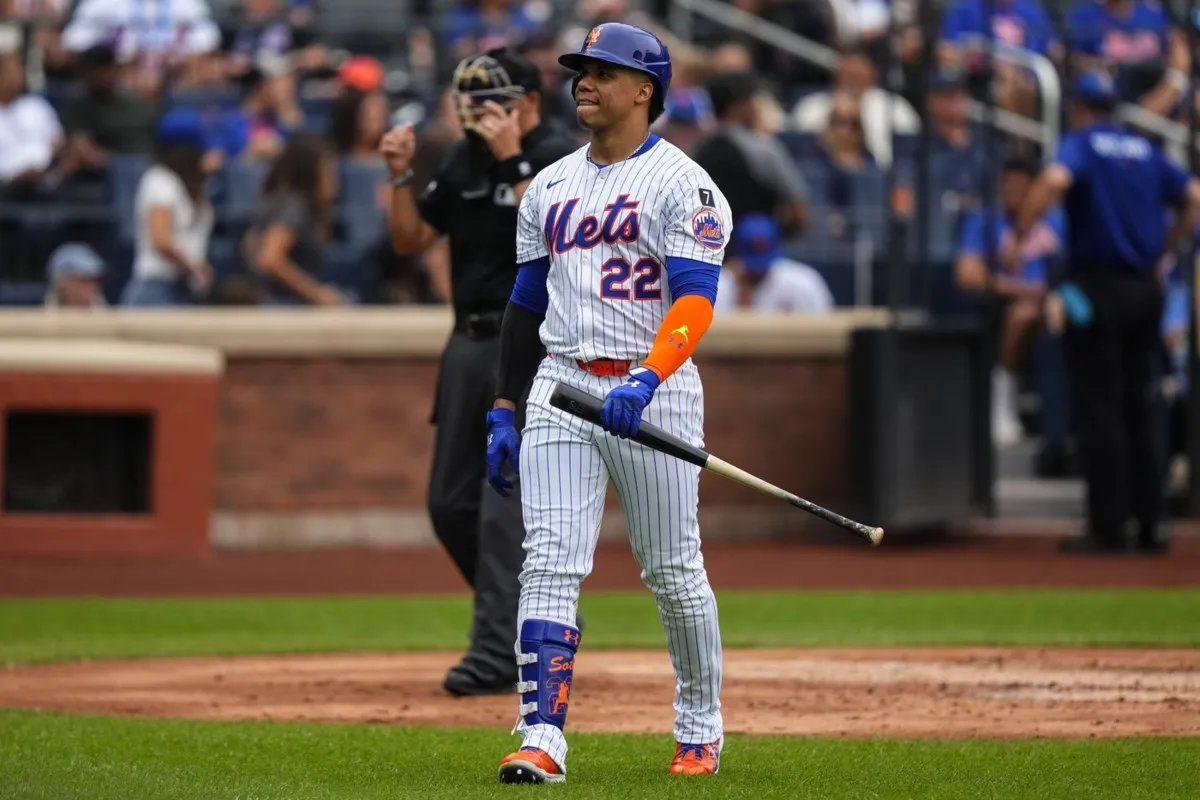
Juan Soto’s Shocking MLB Downfall — How a Superstar Slid Back to the Bottom in Defense
In the world of Major League Baseball, few names have risen as quickly and dramatically as Juan Soto. From the moment he burst onto the scene with the Washington Nationals in 2018, the young Dominican star was hailed as a generational talent. His ability to dominate at the plate with patience, power, and poise beyond his years made him one of the league’s brightest young faces. In fact, his offensive prowess was so overwhelming that many analysts were willing to overlook one glaring weakness in his game — his defensive performance.

Yet, as the years have passed, that overlooked flaw has turned into a central narrative of Soto’s career. Once celebrated as a nearly unstoppable offensive weapon, he now finds himself facing widespread criticism for his struggles in the field. What was once a minor blemish is now becoming a defining storyline: Juan Soto’s defensive decline. This isn’t just a matter of fielding percentages or a couple of awkward plays. The numbers, the eye test, and the advanced analytics all point to the same reality — the superstar who once stood among MLB’s most complete players has slipped to the bottom tier defensively.
The Meteoric Rise of a Bat-First Phenom
When Juan Soto first stepped into a big-league batter’s box at age 19, the baseball world took notice almost instantly. His approach was rare for a rookie: patient, disciplined, and unfazed by the pressure of facing seasoned pitchers. Soto’s rookie season ended with a World Series championship in 2019, where he played a crucial role in the Nationals’ improbable run.
His offensive profile was so dominant that defensive concerns were treated as minor footnotes. Soto was never considered an elite fielder, but in those early years, his arm strength, athleticism, and work ethic offered hope that he could at least be average in the outfield. The Nationals and their fans believed his bat would more than compensate for any shortcomings in the field — and for a while, they were right.
But as his career progressed, something changed. His offensive consistency remained elite, but his ability to track balls, take efficient routes, and position himself in the outfield began to erode. What was once a small crack in his profile widened into a full-blown weakness.
The Defensive Decline Becomes Impossible to Ignore
The turning point came not in a single game but across multiple seasons where defensive metrics painted a troubling picture. Advanced stats like Defensive Runs Saved (DRS) and Outs Above Average (OAA) consistently ranked Soto among the worst defensive outfielders in the league. While these metrics are not without debate, the consistency of his poor scores across different teams and ballparks left little room for excuses.
Opponents began targeting him in subtle ways — taking extra bases on his arm, testing him with deep fly balls, and challenging his reads on line drives. Fans and commentators began to notice the hesitation in his first steps, the awkward angles, and the late jumps. The eye test matched the data: Soto was struggling badly in the field.
The San Diego Padres, who acquired him in a blockbuster trade in 2022, were well aware of his defensive limitations. They hoped that his bat would more than make up for it, but even they could not ignore the defensive liability he was becoming. Plays that should have been routine outs turned into costly hits. Moments where a strong defensive showing could have changed the momentum of a game instead ended with runners advancing or scoring.
Mental Pressure and Overcompensation
Part of the problem with Juan Soto’s defense may be mental rather than purely physical. Baseball is as much a game of confidence as it is of mechanics. As criticism of his defense grew louder, Soto appeared to press harder to prove his doubters wrong. This often backfired, leading to rushed throws, poor decision-making, and misjudged fly balls.
Overcompensation in the field is a dangerous cycle. When a player tries too hard to make a “statement play,” fundamentals often suffer. For Soto, this meant straying from his natural instincts, trying to cut off balls that were better left to a teammate, or firing a rushed throw that sailed off-target. Instead of quieting the conversation, these mistakes amplified it.
The Shift to the Yankees and Continued Concerns
When Soto landed with the New York Yankees, fans hoped a change of scenery might help rejuvenate his defensive performance. Yankee Stadium’s right field is famously challenging, with tricky angles and a short porch that can play mind games with even seasoned outfielders. Unfortunately, the defensive struggles followed him to the Bronx.
Despite working closely with Yankees coaches, Soto’s improvement has been marginal at best. Metrics still place him near the bottom of the league in defensive efficiency. While his bat remains an undeniable asset, the Yankees’ defensive alignment often has to account for his limitations, shifting teammates to cover more ground and positioning him in ways designed to minimize exposure.
Comparing Soto to Other Sluggers with Defensive Weaknesses
Juan Soto is not the first elite hitter to struggle defensively. Players like Miguel Cabrera, David Ortiz, and Kyle Schwarber built Hall of Fame-caliber careers despite defensive shortcomings. The difference is that Soto plays in the outfield — a position where defense is crucial and mistakes are often glaring.
Unlike a designated hitter, an outfielder can’t hide from defensive responsibilities. Every game brings opportunities for his defense to be tested, and when those moments go poorly, they overshadow even the most heroic offensive performances.
The Human Side of a Decline
It’s easy to forget that behind the statistics and highlight reels, Juan Soto is a human being navigating immense pressure. Since his teenage years, he has been labeled a future legend. Living up to such expectations is already a monumental task, but doing so under the constant glare of modern sports media makes it even harder.
Defensive struggles can take a toll on a player’s mental well-being. Teammates, coaches, and even Soto himself have hinted at the frustration of knowing that one part of his game is lagging far behind the rest. While his offensive dominance keeps him in the lineup, the personal disappointment of repeated defensive miscues is not something any player can shrug off easily.
Can Soto Turn It Around?
The question now is whether Soto can reverse this trend. Defense in baseball is not static — players can and do reinvent themselves in the field. Improved conditioning, better positioning, and focused coaching can help even the most struggling defenders. For Soto, this might mean embracing a role where his range is limited but his positioning is perfect, or even considering a future shift to first base or designated hitter as his career progresses.
The Yankees have resources, technology, and experienced staff who can tailor training to address specific weaknesses. If Soto commits fully to this side of his game, there is reason to believe he can at least reach a level of defensive competence that stops being a liability.
The Legacy Question
Every great player’s career is defined not just by their peak moments but also by how they respond to adversity. For Juan Soto, his defensive downfall is a pivotal chapter in his story. If he finds a way to silence the critics and lift his defensive game, it will become part of a redemption narrative that could strengthen his legacy.
But if the trend continues, Soto risks being remembered as a one-dimensional star — a bat so brilliant it overshadowed everything else, but also a glove that dragged his overall value down. Baseball history is full of legends whose shortcomings were forgiven because of their excellence in other areas, but in today’s era of analytics and all-around performance expectations, every flaw is magnified.

Conclusion — A Superstar at a Crossroads
Juan Soto’s journey from rising phenom to struggling defender is a cautionary tale in modern baseball. Talent can elevate a player to stardom, but staying at the top requires constant adaptation. His offensive dominance remains unquestioned, but his defensive regression has become a storyline too big to ignore.
Whether he can reverse this trajectory will shape not only the rest of his career but also how baseball fans and historians remember him. In a sport where every run saved can be as valuable as every run scored, Soto’s glove has the power to either complement his bat or hold it back.
Right now, the choice — and the challenge — is his to make. If he can rise to it, Juan Soto may yet reclaim his place as one of MLB’s most complete players. If not, his name will forever be accompanied by a bittersweet footnote: a superstar who fell to the bottom in defense while still shining at the plate.





